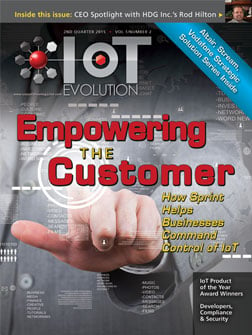Many businesses have workers in more than one location. In a customer-facing department or organization, like a call center, having staff scattered geographically has both upsides and downsides. One of the challenges is providing everyone with the resources they need to seamlessly mobilize their actions during a particular campaign, creating a unified whole that is perceived by customers as being a single entity.
Traditionally, at the start of a campaign, each group of people were given phone number lists and Web sites for inputting results after each customer contact. While this type of solution worked okay, it did have several important drawbacks.
First, there is the lack of centralized control over the information handed out to workers and over the information they collect. Once a phone list is distributed, for example, how does it get updated? Who checks to make sure all the numbers are called?
Second, there is the inability of the groups, or the administrator(s) of the campaign (wherever he/she/they are located) to work as a whole by having instant access to information collected by all the groups.
Finally, the problem with traditional mobilization systems for teams of geographically distributed people performing a campaign is communications expenses. If the campaign is being conducted by volunteers, they may have to foot the bill for phone calls. If paid staff are making customer contacts, the task of tabulating expenses from each group and reimbursing them as needed can be an administrative headache or worse.
The solution to all the issues discussed above is to use a voice broadcast solution, like the one offered by CallFire, that allows staff in a distributed workforce to access the target list, using only a computer connected to the Internet and a phone line. The way this works is that a particular user logs into a secure Web site. After that, the system performs dialing, connecting the user to individuals on the target list, using a predictive algorithm that makes the process efficient.
When the user is connected to a target customer, he or she sees full details related to that caller on the screen, which includes a form for inputting data into the centralized system. In this way, the voice broadcast solution creates a virtual call center experience for each user.
Using such a solution, one political organization with 800 volunteers was able to very quickly mobilize a campaign collecting statistics for a Senate election. The organization set up the campaign within one hour. During the proceeding 3 days, volunteers logged into the system and performed calls to collect the information. The efficiency of the system helped the organization increase its contact rate by 40 percent.
To learn how a distributed call center solution can help your organization perform more efficient sales or information-gathering campaigns, please visit the Voice Broadcast channel on TMCnet.com, brought to you by CallFire.
Mark your calendars! Internet Telephony (News - Alert) Conference & EXPO—the first major IP communications event of the year—is just days away. It’s not too late to register for the event, which takes place in Miami Beach, FL, January 23–25, 2008. The EXPO will feature three valuable days of exhibits, conferences and networking that you won’t want to miss. So what are you waiting for? Sign up now!
communications event of the year—is just days away. It’s not too late to register for the event, which takes place in Miami Beach, FL, January 23–25, 2008. The EXPO will feature three valuable days of exhibits, conferences and networking that you won’t want to miss. So what are you waiting for? Sign up now!
Mae Kowalke is an associate editor for TMCnet, covering VoIP , CRM, call center and wireless technologies. To read more of Mae’s articles, please visit her columnist page. She also blogs for TMCnet here.
, CRM, call center and wireless technologies. To read more of Mae’s articles, please visit her columnist page. She also blogs for TMCnet here.  Internet Protocol (IP) Internet Protocol (IP) | X |
| IP stands for Internet Protocol, a data-networking protocol developed throughout the 1980s. It is the established standard protocol for transmitting and receiving data
in packets over the Internet. I...more |
 Voice over IP (VoIP) Voice over IP (VoIP) | X |
| A real-time communications system that converts voice into digital packets containing media and signaling data that travel over networks using Internet Protocol....more |
 Internet Telephony Magazine
Click here to read latest issue
Internet Telephony Magazine
Click here to read latest issue CUSTOMER
CUSTOMER  Cloud Computing Magazine
Click here to read latest issue
Cloud Computing Magazine
Click here to read latest issue IoT EVOLUTION MAGAZINE
IoT EVOLUTION MAGAZINE




